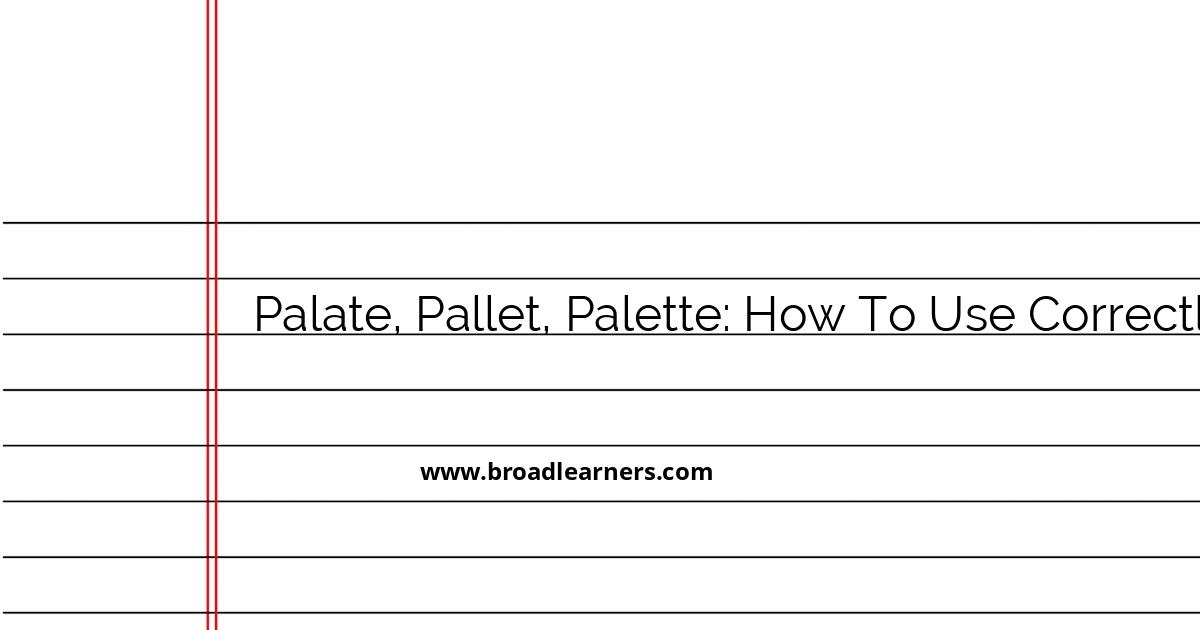The words palate, pallet, and palette are homophones, meaning they sound alike but have different meanings and spellings. These three words are often a source of confusion due to their similar pronunciations. In this guide, we will explore the definitions and uses of each word, along with examples to clarify their correct usage.
- Palate
-
The term 'palate' refers to the roof of the mouth in humans and other vertebrates. In a broader sense, it is also used to describe one's sense of taste or appreciation for flavors.
Examples:
Mary's palate is highly refined, allowing her to distinguish subtle differences in wines.
The chef designed the menu to please a sophisticated palate, balancing salty, sweet, and umami flavors.
- Pallet
-
'Pallet' is a term that can refer to a flat transport structure that supports goods in a stable manner during transportation or storage. It is often made of wood, plastic, or metal. It can also refer to a small bed or makeshift bedding.
Examples:
The warehouse was filled with pallets loaded with various merchandise ready for shipping.
During the camping trip, they slept on makeshift pallets of straw to stay warm.
- Palette
-
'Palette' refers to a board or surface on which an artist arranges and mixes paints. More broadly, it can also mean the range of colors used in a particular context, such as art or design.
Examples:
The artist selected a vibrant palette of reds and golds to capture the beauty of sunset.
Graphic designers often work with a digital palette to ensure their color choices are consistent across media.
Understanding the distinctions between these three words can greatly improve clarity in writing and communication. Remember:
- Palate is about taste or the roof of the mouth.
- Pallet involves transportation or makeshift bedding.
- Palette is associated with colors and art.
By keeping these meanings in mind, you can accurately use these words in the appropriate context.

Did I miss anything? Respond below